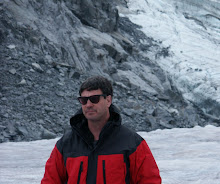
Martha is an expert at capturing the soul of her animal subjects. This dog is a wise and ancient Pug who has seen many years of life flowing by and taken it all in with great aplomb. Together Martha and I operate a little art business called "Barking Dog Studios." We've been busy lately. Martha has been swamped with dog portraits and last Friday we hosted a gigantic christening party for my Miracle of Hope paintings. The party was a raging success and the paintings are now hanging in the Stanford Positive Care Clinic. I talked to a couple patients and they seemed pretty stoked. During the party I talked to the head of Stanford's Immunology Department. She urged me to paint more microscopic based medical art and gave me several suggestions. Today I am starting a painting of natural killer cells attacking a cancer cell. There is a microscopic war between the immune system and alien invaders occurring inside all our bodies day in and day out. I spent 20 years making representational animal sculptures and painting this microscopic war taps into my experience with 3 dimensional biological art. Reading about natural killer cells (NKC) enflamed my imagination. The battle between NKC and cancer cells is truly a battle between good and evil. Now I'm stoked.





















